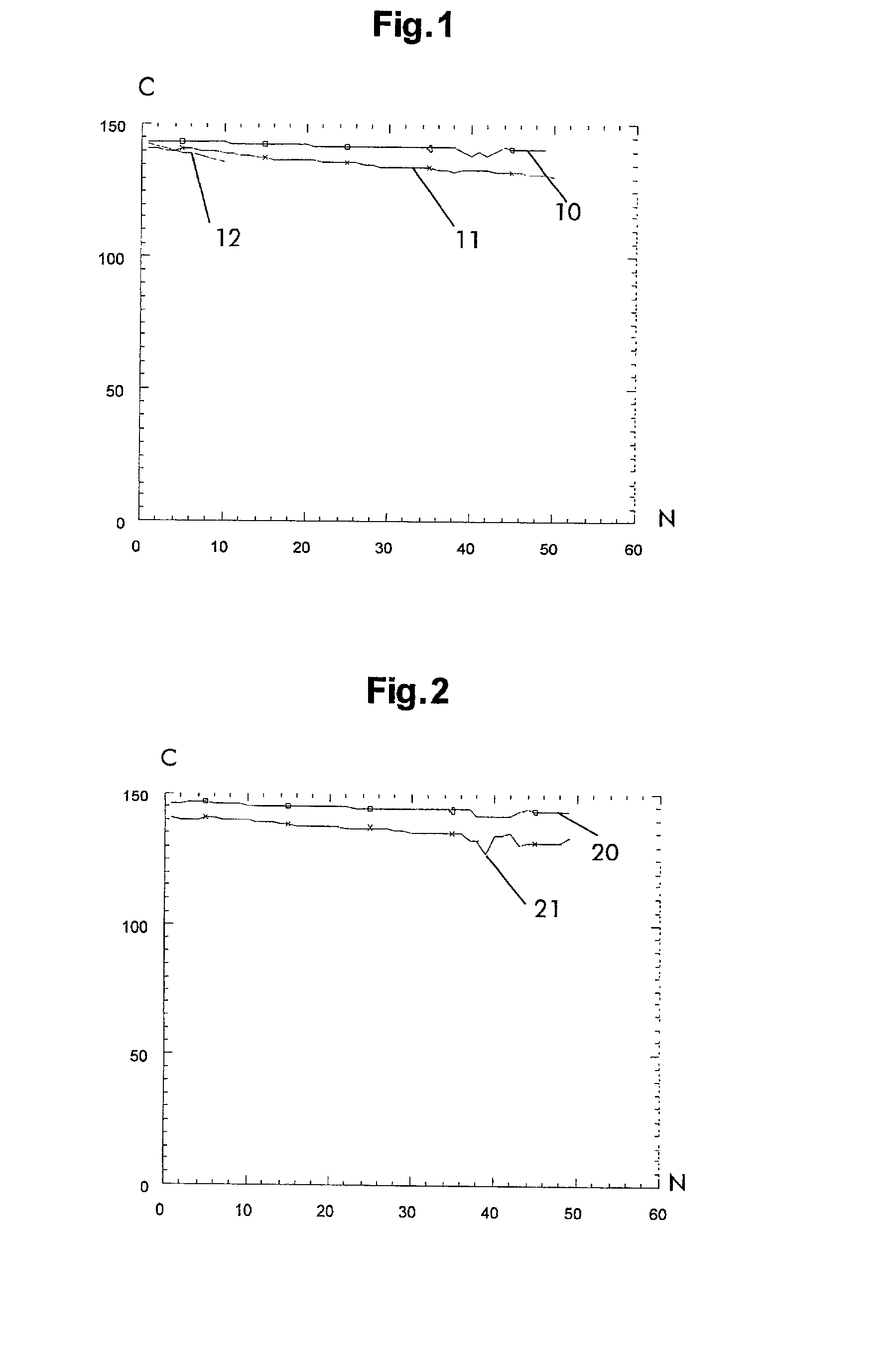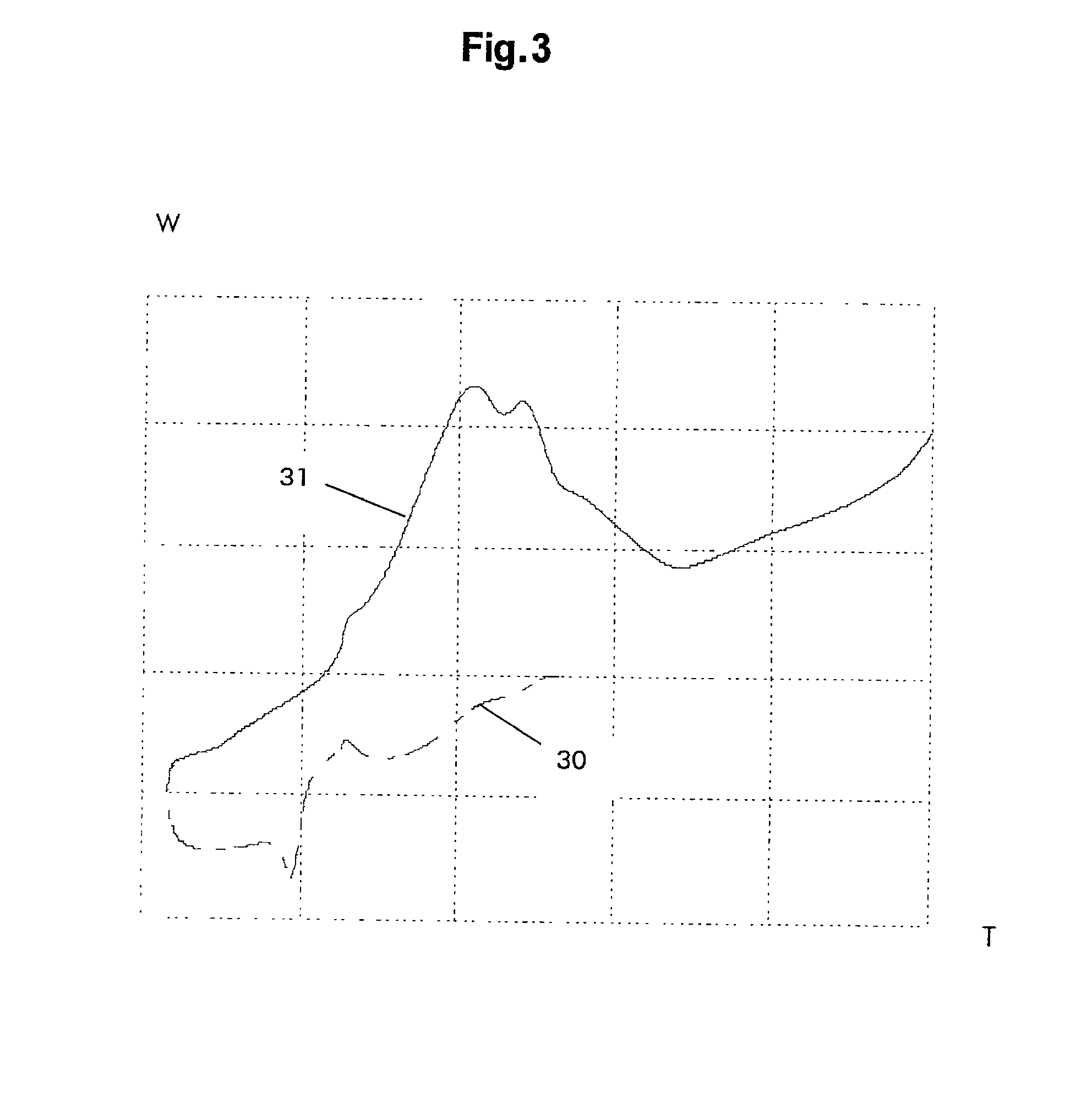Rechargeable lithium storage cell
a lithium storage cell and rechargeable technology, applied in the field of rechargeable lithium storage cells, can solve the problems of disadvantages of industrial processes involving organic solvents
- Summary
- Abstract
- Description
- Claims
- Application Information
AI Technical Summary
Benefits of technology
Problems solved by technology
Method used
Image
Examples
example 1
[0031] A negative electrode in accordance with the invention was prepared 20 consisting of a paste supported by a conductive aluminum tape. The paste had the following composition:
1 electrochemically active Li.sub.4 / 3Ti.sub.5 / 3O.sub.494% material: binder: SBR 2% CMC with MW > 200 000 2% conductive material: finely divided soot 2%
[0032] The powdered active material was added to the SBR in 51 wt % concentration solution in water. The CMC in 1 wt % concentration solution in water was then added to the mixture. The carboxymethylcellulose used was a CMC of high viscosity, i.e. one having an average molecular weight from 325 000 to 435 000. The paste obtained was spread on a copper tape, after which the electrode was dried in air at room temperature and then rolled to obtain a porosity from 40% to 60%.
[0033] The other electrode was a foil of lithium metal. A microporous polyolefin separator was placed between the electrodes to form an electrochemical bundle. The electrochemical bundle was...
example 2
[0034] A test button cell Ib was made in a similar way to example 1 except that it contained an electrode consisting of the lithium salt LiPF.sub.6 in 1M solution in a 1 / 1 / 3 by volume PC / EC / DMC solvent.
example 3
[0035] A test button cell ha was made similar to that of example 1 except that it contained an electrode in accordance with the invention whose paste had the following composition:
2 electrochemically active Li.sub.4 / 3Ti.sub.5 / 3O.sub.494% material: binder: NBR 2% CMC with MW > 200 000 2% conductive material: finely divided soot 2%
[0036] The powdered active material was added to the NBR in 41 wt % concentration solution in water. CMC in 1 wt % concentration solution in water was then added to the mixture. The carboxymethylcellulose used was a CMC of high viscosity, i.e. having an average molecular weight from 325 000 to 435 000. The paste obtained was spread on an aluminum tape, after which the electrode was dried in air at room temperature and then rolled to obtain a porosity from 40% to 60%.
PUM
| Property | Measurement | Unit |
|---|---|---|
| Fraction | aaaaa | aaaaa |
| Fraction | aaaaa | aaaaa |
| Fraction | aaaaa | aaaaa |
Abstract
Description
Claims
Application Information
 Login to View More
Login to View More - R&D
- Intellectual Property
- Life Sciences
- Materials
- Tech Scout
- Unparalleled Data Quality
- Higher Quality Content
- 60% Fewer Hallucinations
Browse by: Latest US Patents, China's latest patents, Technical Efficacy Thesaurus, Application Domain, Technology Topic, Popular Technical Reports.
© 2025 PatSnap. All rights reserved.Legal|Privacy policy|Modern Slavery Act Transparency Statement|Sitemap|About US| Contact US: help@patsnap.com



